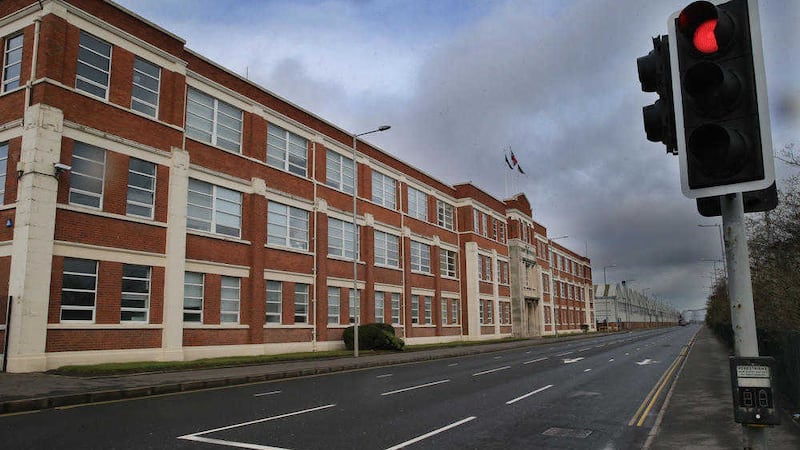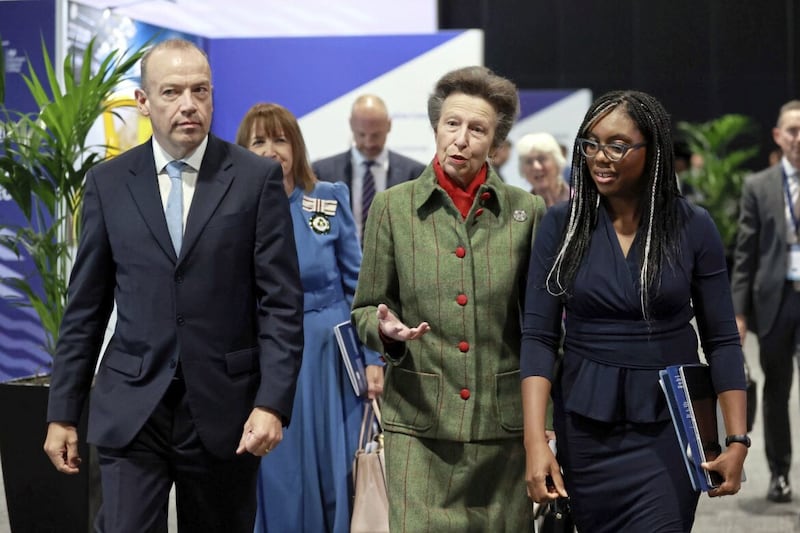LAST week’s announcement that the local economy is to lose another 1,000 jobs was a significant blow. The Bombardier announcement was not just sobering because of the sheer number of jobs lost but also the fact these jobs were lost in a high-value added sector (advanced engineering) only adds to the frustration.
Our latest manufacturing job losses are a glaring reminder that as a small, open economy, Northern Ireland is very much exposed to the vagaries of the global economy and they highlight the fact that both policy makers and the local business community must now relentlessly focus on the key drivers of economic growth – investment, infrastructure, skills, innovation and enterprise.
Investment in both physical capital (such as buildings, roads and transport corridors) and human capital (the quality of the labour force) is an essential component of any region’s economic growth.
Indeed, the higher the level of investment as a percentage of GDP, the higher a country’s growth rate tends to be. Academic research by Fatas and Mihov (2009) demonstrates that “countries that grow fast do so because of high investment rates… As countries start with low levels of capital (and low productivity and GDP per capita) they have tremendous opportunities to invest and increase their capital stock and their knowledge in order to catch up with rich countries”.
Quite simply, countries that grow at high levels do so because of high investment rates. Countries such as China, Korea and Singapore that have built up their physical capital at rates of 30-45 per cent of GDP each year, have high growth rates of above 6 per cent.
Steady state growth in Northern Ireland is generally considered to be in the region of 2 to 2.5 per cent, but this region has the potential to see much higher levels of growth of perhaps 3.5 to 4 per cent - if we have the ambition, if we are prepared to invest and if we are astute enough to recognise opportunities on our doorstep. Infrastructure investment is one such opportunity.
It is key to our future economic success because higher levels of economic growth for this region can only ever be attained through external trade. Even our lower rate of corporation tax will not work effectively if we do not have an adequate infrastructure to get our goods transported quickly and cheaply out of the region, or if we do not have sufficient broadband capability to download and upload data in the most efficient way.
Unfortunately in Northern Ireland for decades now we have endured massive under investment in our physical infrastructure. We spend less per head on transport that the rest of the UK and significantly less than the Republic of Ireland. Hence we continue to lag behind economically and we will continue to do so if the status quo is maintained. This local infrastructure deficit needs to be urgently addressed if we are to attract foreign businesses, give our own indigenous companies the opportunity to thrive and raise local living standards.
With borrowing costs now set to remain at historic lows into the medium term, this is an opportune time for both government and the private sector to borrow for investment purposes. But government of course has strict borrowing and spending constraints, deficits are only allowed to grow so large. Thus it is critical that in Northern Ireland we start to recognise that some investment opportunities need to be both funded and delivered by the private sector.
For real economic growth that delivers jobs and a better quality of life for every citizen in Northern Ireland we must strive to fully capture every possible opportunity. Being physically linked to the Republic of Ireland, the fastest growing and most dynamic economy in Europe, is an advantage that the rest of the UK does not have. And let’s face it, we really must take advantage of every opportunity available to us.
Further tapping into the Republic’s dynamic tourist market, capturing some of the spill-over from their foreign direct investors and developing deeper trade links for both manufacturing exports and the retail sector would benefit our economy enormously. We already tap into some of these areas - for example the British-Irish visas for Asian tourists sought by the former Minister for Enterprise and now First Minister Arlene Foster has helped to bump up Chinese tourist visits to the Giant’s Causeway by 75 per cent. But there is potential for so much more.
Currently, one of the best proposals out there for delivering a step-change in Northern Ireland’s economic performance is the CBI/IBEC All-Island Investment Project (AIIP). This is a project that is based on aspiration and ambition for the island of Ireland. It looks at our future population growth on this entire island which has the potential to reach 10 million over the next five decades, and it plans for the necessary road infrastructure, energy markets and digital connectivity. The CBI/IBEC proposal looks to the private sector for the funding and delivery of a thriving and well-connected island.
Incorporated within this elaborate plan are proposals for an all-island motorway network which would not just optimise the Belfast-Dublin economic corridor, but would provide unlimited opportunities to the North West of Northern Ireland and communities west of the Bann. Such an investment in the island’s road infrastructure would enable citizens on both sides of the border to fully participate in the opportunities that will arise from economic and population growth in the years ahead.
This all-island infrastructure plan has the potential to create thousands of jobs at a time when our job creation record is moving at a snail’s pace compared to the Republic’s. It would also allow us to leave a positive legacy for future generations in terms connectivity and economic opportunity.
Indeed, this plan has the potential to transform the long-term economies of both the Republic of Ireland and the North of Ireland.
It would be my view that a combination of major infrastructure investment combined with the introduction of a lower rate of corporation tax, sound institutions and a stable Executive could leave Northern Ireland with a thriving economy in the decades ahead. It may require a leap of faith, particularly from those who are wary of private sector involvement or even from those who are wary of our neighbours south of the border.
But to me it looks like a win-win situation. We gain and so does the Republic. Jobs are created now and future generations benefit from better infrastructure and higher economic growth. Our lack of economic progress to date tells us that maintaining the status quo is not an option, it is time to be much more ambitious.
:: Angela McGowan is chief economist at Danske Bank in Northern Ireland.
:: Next week: Richard Ramsey.








